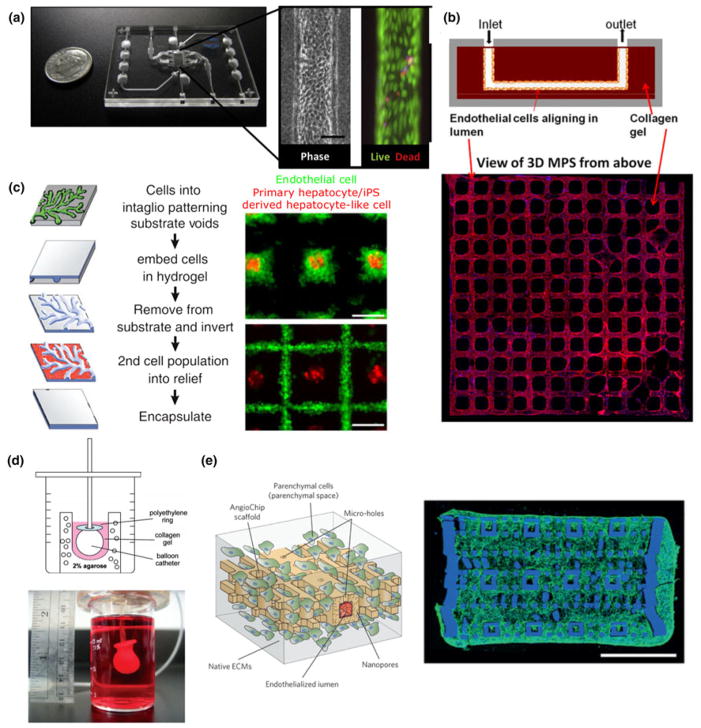Figure 3.
Hydrogel casting and molding of organ functional units. By subtractive casting, Weber et al. formed linear channels in a collagen I gel lined with human proximal tubule epithelial cells with high viability (a, figure adapted from Weber et al.[5]). Our group has utilized stamping to form a 3D peritubular vascular network in collagen I containing human kidney microvascular endothelial cells (b, adapted from Ligresti et al.[115]). The InVERT molding strategy developed by Stevens et al. allows multiple hepatic subtypes to be cultured with spatial and geometric control (c, figure adapted from Stevens et al.[32]). By bulk molding, Lee et al. created centimeter-scale cardiac organoid chambers that had low levels of pump function (d, figure adapted from Lee et al.[112]). Highly vascularized 3D cardiac tissues were created by the Radisic group using a stamping and layering technique (e, figure adapted from Zhang et al.[111]).

